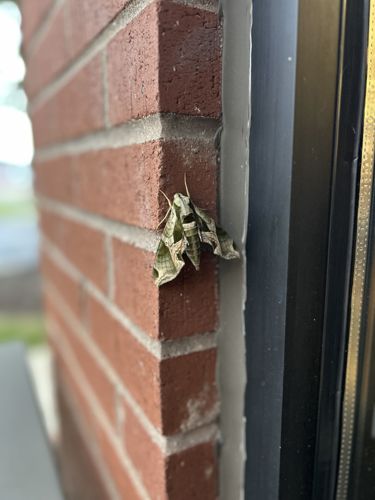Pandora Sphinx Moth
Scientific Name: Eumorpha pandorus
Order & Family: Lepidoptera, Sphingidae
Size: Wingspan typically ranges from 8.5 to 11.5 cm (3.3 to 4.5 inches).

Natural Habitat
Deciduous forests, woodlands, suburban areas, and gardens where host plants like Virginia Creeper and grapevines are present. They are often found near lights at night.
Diet & Feeding
Adult moths primarily feed on nectar from various flowers, often hovering while feeding. Caterpillars (larvae) are herbivorous, feeding on the leaves of host plants such as Virginia Creeper (Parthenocissus quinquefolia) and cultivated grapevines (Vitis species).
Behavior Patterns
Adult Pandora Sphinx moths are nocturnal, actively flying and feeding at dusk and throughout the night. They are strong, agile fliers, often mistaken for hummingbirds due to their hovering flight pattern while nectaring. During the day, they rest camouflaged on tree bark or other surfaces, as seen in the image. The caterpillars are large, green or brown, and have a prominent horn or eye spot near their posterior end when mature.
Risks & Benefits
Generally, Pandora Sphinx moths pose no risks to humans. They are not pests and do not sting or bite. As pollinators, adult moths provide a benefit to ecosystems by aiding in the reproduction of various flowering plants. While their caterpillars can feed on grapevines, they rarely cause significant damage to cultivated crops, making them generally beneficial or benign.
Identified on: 9/8/2025